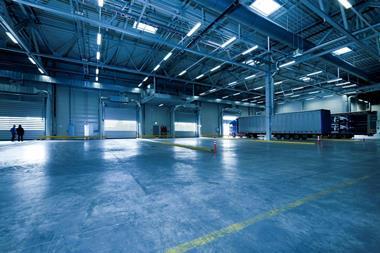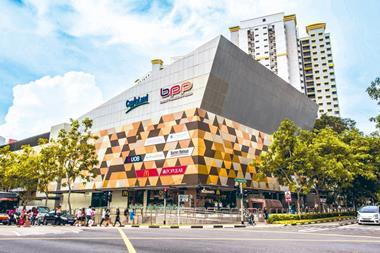Singapore looks set to offer significant investment opportunities in the residential and hotel sectors, writes Michael Grimes
The reinvention of Singapore as a casino and holiday destination is likely to support capital growth opportunities in the city's residential and hotel sectors for at least the next two years.
The reason is speculation related to possible supply-side shortages of both homes and hotel space in the run-up to the opening of Singapore's two new casino resorts.
Singapore's prime minister, Lee Hsien Loong, said in a statement in 2005 that the resorts could create up to 35,000 new jobs.
The city's unemployment rate at the end of December 2007 was only 1.6%, so it seems likely a significant number of new workers - some at executive grade - will need to be imported, although lower-paid workers and some tourists could be housed over the border in neighbouring Malaysia's new Iskandar Development Region. That project has already attracted US$1.2bn (€0.76bn) investment from the Middle East's Gulf Cooperation Council for infrastructure including homes and hotels. The need for a daily crossing of an international border could though provide a disincentive to commuters. Speculation that Zuhai in China would become a dormitory settlement for Macau's new casino industry has not so far proven accurate.
Within Singapore the Ministry of National Development is providing capacity for 20,200 new residential units by 2009 under the Government Land Sales Programme (GLS), with a further 21,400 units in 2010. Given, though, that residential property inflation stood at 31.2% last year, the market view seems to be that recent macroeconomic conditions affecting credit markets may cause delays in the new pipeline of domestic stock.
"There's been a run of speculation in the Singapore property market linked to the integrated resorts already," says Andrew Chan, senior portfolio manager, private real estate, at Fortis Investments.
"We have seen it in those areas closest to the proposed integrated resorts. People are speculating on infrastructure in these particular areas, with a view to exiting in two to three years. Otherwise I don't see the bull run in residential property prices in Singapore last year sustainable from a fundamentals perspective."
Official data support this bearish view on the fundamentals. In the fourth quarter of 2007, business productivity fell in most sectors when compared year on year. The only exceptions were the construction industry and transport and storage, says the February bulletin from government agency Statistics Singapore.
Singapore Tourism Board (STB) expects the city's new infrastructure to bring in 17m visitors annually by 2015. This is equal to the total number of foreign visitors for the whole of neighbouring Malaysia in 2006 and a 65% increase on the 10.3m who visited Singapore in 2007. The city also expects S$30bn (€13.9bn) in tourism receipts by 2015 - more than double the S$13.6bn income they brought in last year.
Capital growth in the hotel sector is likely to be driven by demand for product outstripping supply. According to STB data, between 2004 and June 2007, only 631 new hotel rooms came onto the market. Yet during that same period, average occupancy rose from 80.6% to 86.9% and total hotel room revenue leapt from S$1.02bn to S$1.85 bn, while average room rates rose 66.3% from S$121.70 to S$202.40.
Singapore currently has 37,396 hotel rooms, operating at 87% occupancy, according to STB. The two casino resorts have capacity for 52,300 convention delegates, but provision for only 4,800 new hotel rooms. Even with that additional capacity the city will have 10,104 fewer hotel rooms than potential delegates. That's not counting the visitor traffic created by the 233,000m2 of exhibition space at Singapore Expo, Suntec Singapore International Convention and Exhibition Centre and Changi Exhibition Centre.
The authorities have responded to this potential accommodation shortage by allocating 10 sites for hotel use under the GLS Programme for the first half of 2008. They estimate this will provide 5,850 extra rooms.
Given that real estate investment trusts (REITs) can only commit capital to completed projects, institutional investors seeking exposure to the Singapore hotel sector may need to take a lower-yield route via bonds or a higher-risk method via equity, or to wait for project completion and injection of the asset into a REIT. There's no guarantee the latter will happen. Developers may prefer to trade out by other means or hold on for rental income.
"Currently, the biggest threat to real estate markets in Singapore is the robustness of GDP growth on office rental growth over the next few quarters," says Megan Walters, regional director, research and business analytics group, Asia Pacific, for the global real estate adviser Cushman & Wakefield.
"The Singapore government is projecting GDP growth of between 4.5% and 6.5% in 2008. Should it fall below 4% as a result of weak export markets and lower flows of direct investment, then there may be a downturn in office demand, but with vacancy rates at 1% in Raffles Place in the heart of the CBD, we do not expect any great downward correction in rents," she adds.
For investors with a tolerance for risk, the recent general falls on the Singapore Exchange created valuation opportunities in the equities of local developers such as CapitaLand and Keppel Land and continues to provide them for Singapore REITs.
Victor Yeung, vice-president and senior securities analyst for Asia at LaSalle Investment Management Securities - a business that has been specialising in property stock investment since 1985 - says: "Capital and valuation became compelling after the recent stock price corrections in the Singapore market. Its fundamentals continue to be strong with projects across the region from China to Russia."
"S-REIT valuation at the moment relative to fundamentals is quite interesting," adds Andrew Chan. "There are definite REIT valuation opportunities in Singapore, especially in situations where there are healthy revenue streams," adds Chan.
Notwithstanding the extra supply of space in the pipeline, Singapore was one of the world's top five performers in office rental growth in 2007, with a 78% increase year on year according to Office Space Across the World 2008, a report from Cushman & Wakefield Research.
The ability of REITs to smooth returns via dividends from rental income is seen as a selling point for institutional investors, but even national REIT regulations requiring generally conservative gearing have not prevented some trusts from facing capital shortfalls related to the global credit squeeze.
At the beginning of March, six of Singapore's 20 S-REITs were trading below net asset value (NAV) according to Reuters. Macquarie Real Estate, the controlling shareholder of Macquarie MEAG Prime Real Estate Investment Trust, an S-REIT with a portfolio of shopping malls and offices, indicated in late February it was willing to sell on its interest. At the time the trust was trading at a 33% discount to NAV.
"Some REITs, even in Singapore, are not well capitalised. This in itself creates opportunities because of mergers and acquisitions," suggests Chan.
"Singapore is gaining critical mass as a REIT hub in Asia - including cross-border REITs," says Raymond Wong, the executive director of the asset manager for Saizen REIT, the first real estate trust based on Japanese assets to be listed in Singapore.












